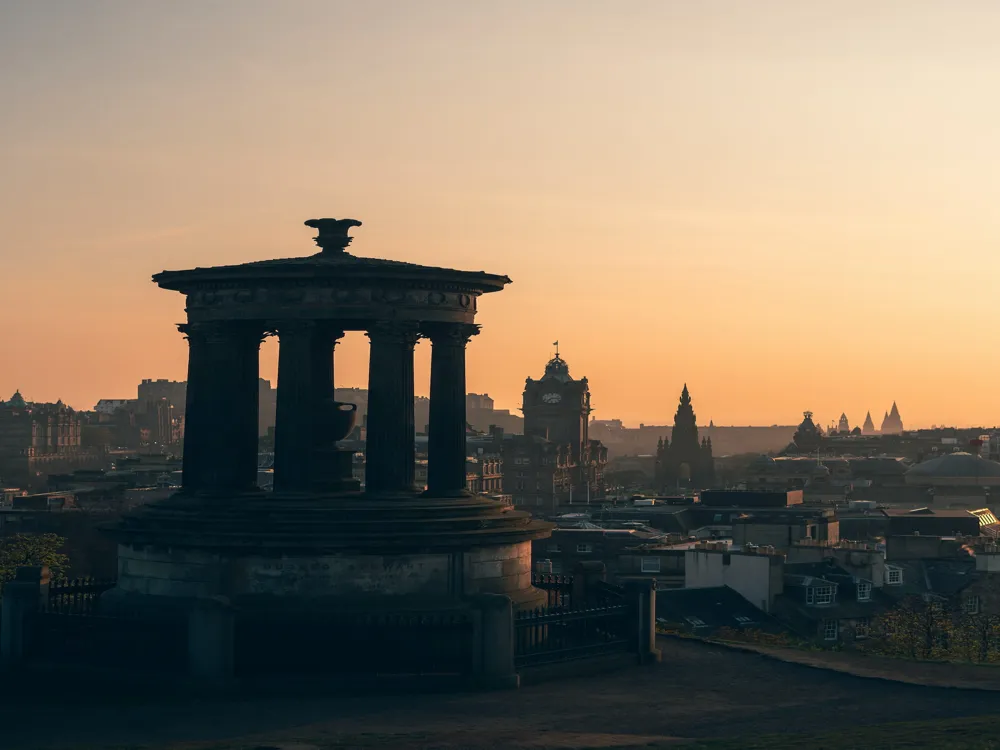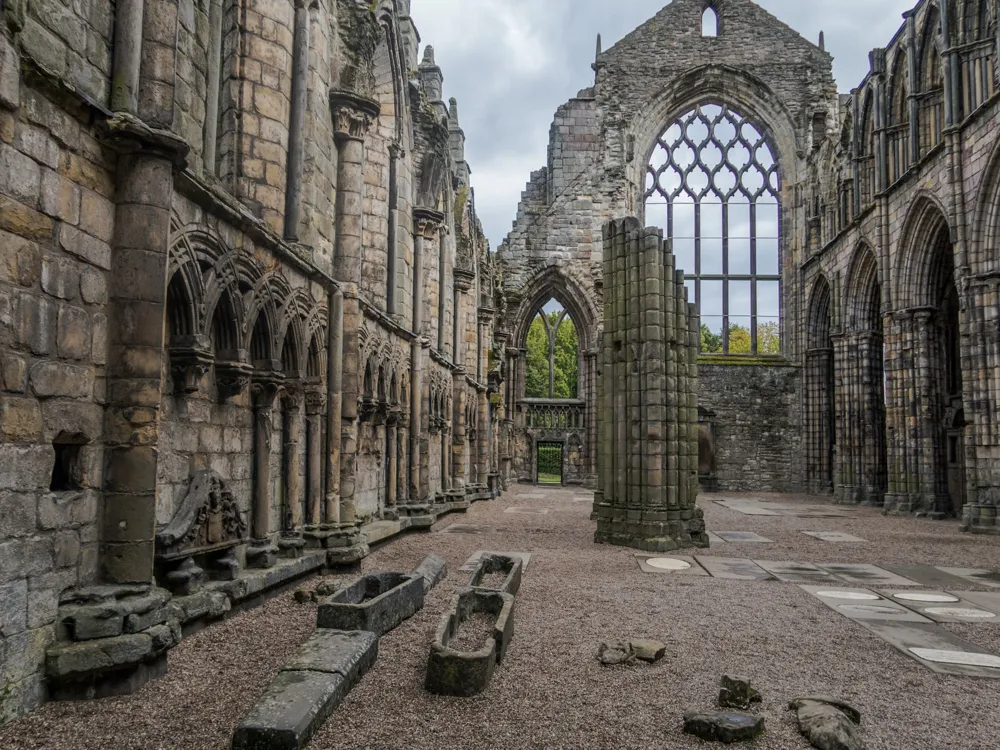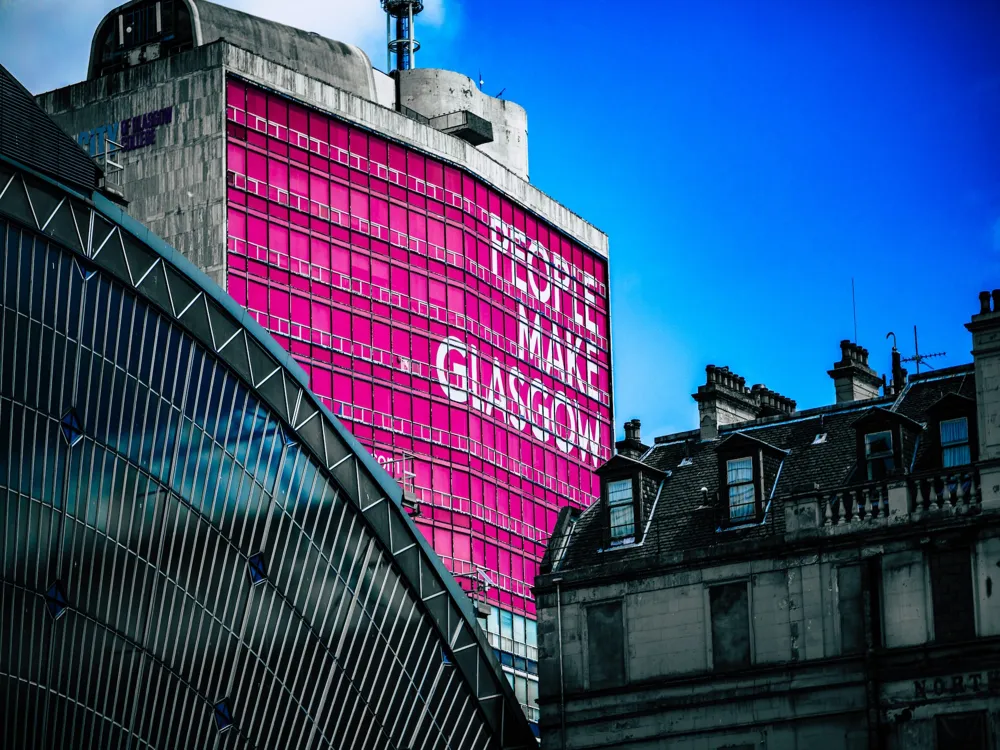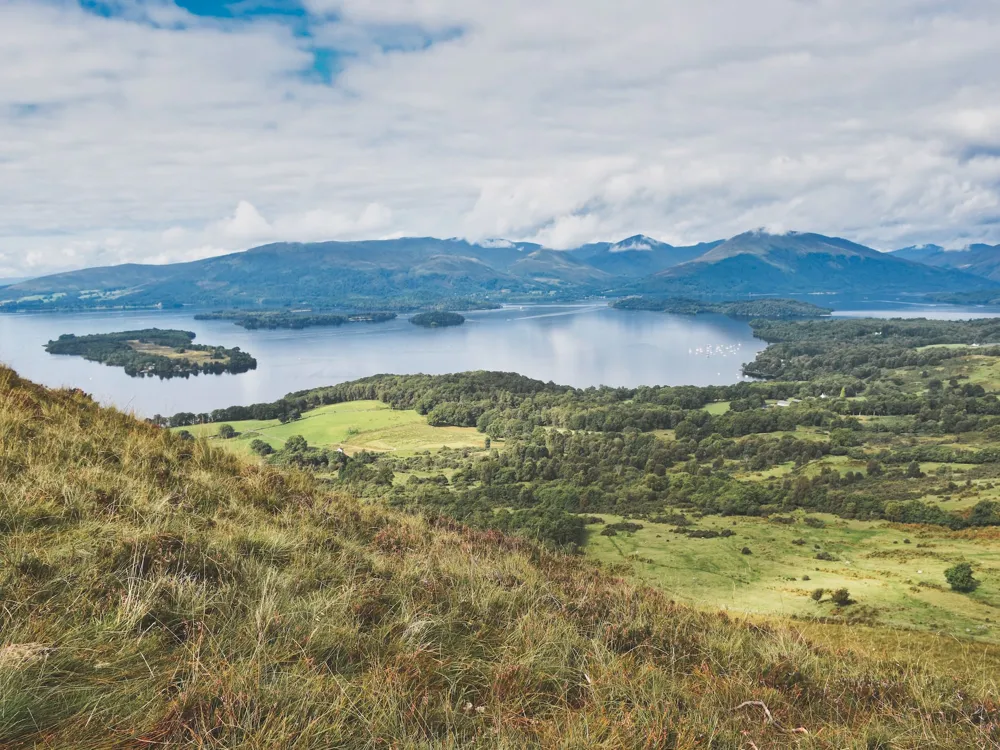Arthur's Seat, a prominent landmark in Edinburgh, Scotland, is an ancient volcano that forms part of Holyrood Park. It rises to a height of 251 meters, offering breathtaking views of the city and beyond. This natural marvel is steeped in history and folklore, with its name possibly deriving from legends associated with King Arthur. The hill is a popular destination for both locals and tourists, offering a unique blend of natural beauty, panoramic views, and a deep sense of history. The formation of Arthur's Seat dates back to an ancient volcanic activity around 340 million years ago. The hill's rugged and craggy landscape is a result of subsequent glacial movement during the Ice Age, which carved out its distinctive features. This geological masterpiece stands as a natural monument, showcasing the power and history of Earth's movements. Arthur's Seat is not only a geological wonder but also a site of significant historical importance. The hill and its surroundings have been inhabited since ancient times, with archaeological findings indicating human presence dating back to about 5,000 years ago. The area is dotted with various historical and prehistoric sites, including hill forts dating from the Iron Age. The flora and fauna of Arthur's Seat add to its charm. The park is home to a variety of plant species, some of which are rare and protected. The rich biodiversity includes grasslands, woodlands, and wetlands, each supporting a different set of species. The hill is also a haven for birdwatchers, with its diverse bird population including the peregrine falcon, the kestrel, and various species of owls. The panoramic views from the summit of Arthur's Seat are unparalleled. Visitors are treated to a 360-degree view that encompasses Edinburgh Castle, the Firth of Forth, the Pentland Hills, and on clear days, the peaks of the Kingdom of Fife and the North Sea. This stunning vista is a reward for those who undertake the climb and is a major factor in the site's enduring popularity. While Arthur's Seat itself is a natural formation, its surrounding area is rich in architectural heritage, blending natural and human-made elements seamlessly. Holyrood Park, in which Arthur's Seat is situated, is a royal park adjacent to Holyrood Palace, the official residence of the British monarch in Scotland. The park's landscape is an outstanding example of 19th-century landscape design, maintaining a balance between natural beauty and historical architecture. Holyrood Park is home to several architectural marvels, including St Anthony's Chapel, a medieval ruin located on the north side of Arthur's Seat. The origins of this chapel are somewhat mysterious, but it is believed to date back to the 15th century. Although only a small portion of the original structure remains, it offers a glimpse into the area's rich ecclesiastical history. Another significant architectural feature near Arthur's Seat is the Duddingston Kirk. Located on the east side of the park, this historic church dates back to the 12th century and is an excellent example of Romanesque architecture. The kirk, with its ancient graveyard and picturesque setting near Duddingston Loch, provides a serene and historically rich environment for visitors. The Radical Road, a path running around the Salisbury Crags, is another significant feature. It was constructed in the early 19th century and offers a unique walking experience with stunning views of the city. The road's construction was proposed by Sir Walter Scott and was built by unemployed weavers as a form of relief work during a period of economic hardship. The architecture surrounding Arthur's Seat is not limited to ancient structures. The Scottish Parliament Building, a modern architectural wonder, lies at the foot of the Royal Mile in front of Holyrood Park. Completed in 2004, the building is a bold and controversial example of contemporary architecture, with its innovative design reflecting the landforms of Scotland, particularly those of Arthur's Seat and Salisbury Crags. The best time to visit Arthur's Seat is during the spring and summer months when the weather is milder, and the days are longer. However, the site offers different experiences throughout the year, with each season bringing its unique charm. Wear appropriate footwear as the terrain can be rough and slippery, especially after rain. It's also advisable to check the weather forecast before planning your visit and to be prepared for sudden weather changes. Consider taking a guided tour for a more informative experience. Local guides offer insights into the history, geology, and folklore associated with Arthur's Seat. For photographers, the golden hours of sunrise and sunset offer the best light for capturing the stunning landscape. Also, don't miss the opportunity to photograph Edinburgh from the summit. Preserve the natural beauty of the area by not leaving any litter behind and respecting the wildlife and plant life in the park. Arthur's Seat is easily accessible from Edinburgh city center. Visitors can take a bus to Holyrood Park and then follow the well-marked trails to the summit. For those driving, there are parking facilities available at several locations around Holyrood Park. The nearest train station is Edinburgh Waverley, from where Arthur's Seat is a short walk or bus ride away. Read More: Overview of Arthur's Seat in Edinburgh
Architecture of Arthur's Seat
Tips When Visiting Arthur's Seat
Best Time to Visit
Safety Precautions
Guided Tours
Photography Tips
Respecting the Environment
How To Reach Arthur's Seat
Arthur's Seat
Edinburgh
₹ 54,993 onwards
View edinburgh Packages
Weather :
Label : Must Visit
Tags : Viewpoint
Time Required : 1-2 hours
Planning a Trip? Ask Your Question
Also Refered As:
Suicide Point
Edinburgh Travel Packages
View All Packages For Edinburgh
Top Hotel Collections for Edinburgh

Private Pool

Luxury Hotels

5-Star Hotels

Pet Friendly
Top Hotels Near Edinburgh
Other Top Ranking Places In Edinburgh
View All Places To Visit In edinburgh
View edinburgh Packages
Weather :
Label : Must Visit
Tags : Viewpoint
Time Required : 1-2 hours
Planning a Trip? Ask Your Question
Also Refered As:
Suicide Point
Edinburgh Travel Packages
View All Packages For Edinburgh
Top Hotel Collections for Edinburgh

Private Pool

Luxury Hotels

5-Star Hotels

Pet Friendly

























